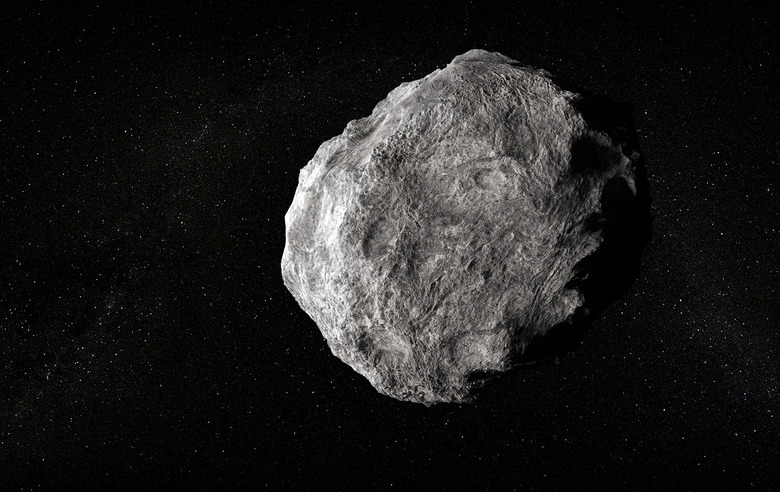NASA Is Tracking A 1,000-Foot-Tall Asteroid That's Headed Towards Earth
NASA scientists have issued a warning about a "Potentially Hazardous Asteroid" (PHA) that will fly close to earth in mid-December. The asteroid is larger than 90 percent of asteroids, according to Daily Record, but still smaller than some of the larger reported asteroids. Thankfully, the asteroid won't come close enough to our planet to do any damage. Near passes like these happen somewhat frequently. But the term "near" is relative when you're talking about the infinite vastness of outer space.
A massive hazardous asteroid is coming close to Earth

Comet, asteroid, meteorite flying to the planet Earth.
NASA predicts that the massive asteroid will pass by Earth on December 11, just a month and a few days from now. The asteroid has been classified as 4660 Nereus, and NASA does consider it very hazardous. The organization says that the asteroid is almost three times the size of a football pitch — roughly the size of the Eiffel tower.
While it could be hazardous if it hits the Earth, NASA says the asteroid will fly by the planet at a distance of roughly 3.9 million kilometers. That distance is ten times greater than the area between the Earth and the moon, so it shouldn't cause any issues on our planet. In the past, scientists have considered missions to the asteroid, but have never gone through with them.
Potentially Hazardous Asteroids aren't uncommon, though. Back in September, reports revealed a massive asteroid that is roughly 1,120 feet wide will pass by Earth in 2029 at around 19,000 miles away. That will make it one of the closest encounters we've ever had with an asteroid. Much like 4660 Nereus, though, that asteroid shouldn't cause any impact possibility for another 100 years.
Another asteroid, called 2021RL3, came within 1,804,450 miles of Earth. For reference, the Moon is only 238,855 miles away. Needless to say, 2021RL3 was still a long way out when it passed by Earth.
The discovery and future of 4660 Nereus

A NASA rendering of its asteroid probe.
Eleanor F. Helin originally discovered 4660 Nereus in 1982. Nereus is just one of several asteroids included in the Apollo group. All of the asteroids in this group are known for passing close to the Earth as it orbits the sun.
The asteroid orbits the sun every 664 days. However, scientists predict that it won't come close to the Earth again until March of 2031. After that, it's expected to come close again in 2050, though its closest approach isn't predicted to arrive until February of 2060, roughly forty years down the line. As is the case with next month's pass, however, neither of those passes are expected to be close enough to pose any risk of impact.
